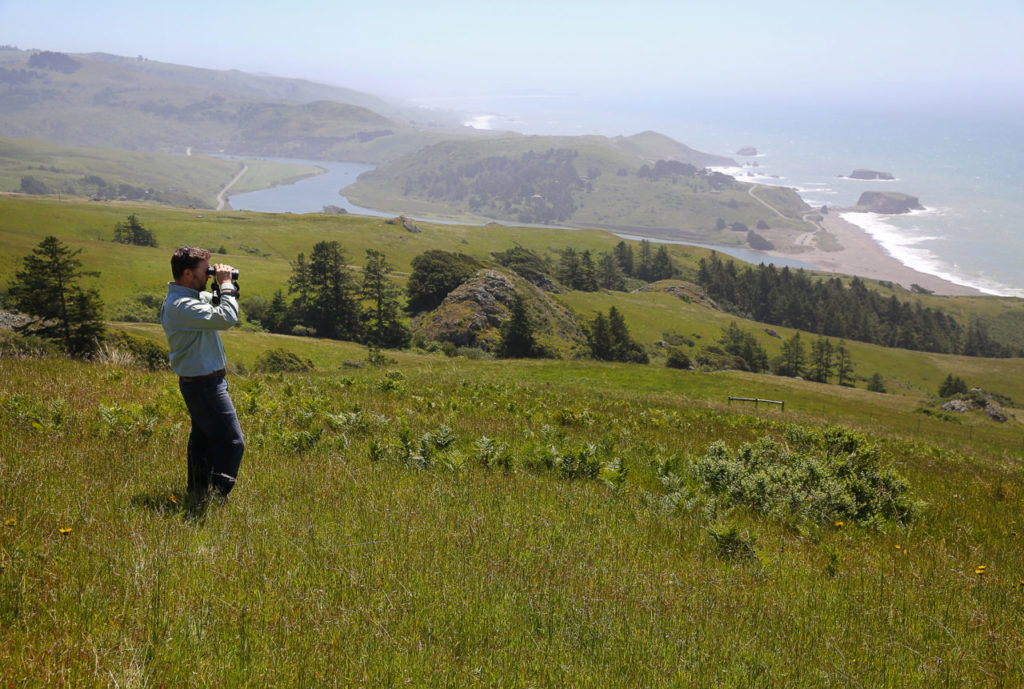California state officials are not allowed to play favorites, so as the head of the Coastal Conservancy I often say that I love all of our coastal counties equally and I am privileged to visit them frequently. But I am only human, and it is hard not to have extra reverence for the Sonoma Coast and the role that it has played in the history of conservation in California.
The coastline of Sonoma is one of our great natural treasures. From lush redwood forests to family-friendly beaches, these 64 miles fronting the Pacific remain a pristine and enchanting remnant of California’s natural heritage. This is not an accident. A storied list of environmental leaders from Sonoma County fought to ensure this coast would remain largely undeveloped, a vision that would turn many of those early activists into pioneering conservation legends.
Grassroots campaigns launched in Sonoma starting in the 1950s and running through the 1970s would prove to be among the most pivotal moments in California’s coastal protection movement. They included the defeat of the “Hole in the Head” nuclear power plant in Bodega Bay and the cry for public access at the Sea Ranch, which spurred the 1976 Coastal Act and spawned our modern era of coastal protection. The very notion of the public coast, now so dear to all Californians, emerged in Sonoma County. I have had the pleasure of biking many of Sonoma’s iconic, and often quite steep roads. The first time I went up Coleman Valley Road, I clearly recall — once I stopped gasping
for breath — the 360-degree view of hills and forest and ocean that have inspired so many residents for so many years.
That rich conservation legacy has been expanded in Sonoma over the past three decades by one of the most effective environmental coalitions in the nation. The results are there for you to experience firsthand, stretching from the protected Estero Americano tidal slough at the county’s southern end to the lovely, tree-lined Gualala River that defines its northern border. In between are unrivaled gems: the 5,600-acre Jenner Headlands Preserve, newly opened to the public, and the 700-acre Kashia Coastal Reserve north of Salt Point State Park, which returns ancestral lands stripped 150 years ago from the Kashia Pomo when they were forced inland.
Sonoma is an exciting place to do this kind of work. The breadth of opportunities here leaves me feeling exhilarated about our ability to safeguard the natural world while opening it up for sustainable use and enjoyment by our growing population. You might not know, but the region’s innovative timber and farming industries play leading roles in this effort. The Coastal Conservancy’s largest single acquisition in Sonoma County, the 19,645-acre property once known as Preservation Ranch, is now being restored using sustainable forestry. And the county’s thriving outdoor recreation economy is propelling other initiatives, including extension of the California Coastal Trail, a public right-of-way envisioned to one day traverse the state’s entire 840-mile coast. Already, hikers can follow trails and beaches for about 60 percent of the Sonoma Coast. One of my favorite places is Stewarts Point. The view is sublime, and the general store is usually stocked with IT’s-IT, the ice cream sandwiches that are my favorite snack in the middle of a long bike ride.
To the south, I like to think of the Russian River and its sprawling network of tributaries as the Pacific’s great inland arteries. They served that purpose for generations of Native Americans and settlers that preceded us, conveying people and goods up- and downstream. For even longer, they have carried the North Coast’s salmon and steelhead trout, another natural spectacle that makes this region so special. From remote reaches of the watershed down to its powerful mainstem, work continues to restore access and habitat for these majestic fish. Underwater window panels at the Mirabel Fish Ladder in Forestville give you an otherworldly view into their ancient migration.
Sonoma County has a well-deserved reputation for being a great place to live, visit, and do business. My wife and I have celebrated wedding anniversaries on the Sonoma coast, and my daughter’s first camping trip was near the mouth of the Russian River, where there is a fabulous walking campground. I have biked the entire Sonoma Coast more than once, and the hardest day I ever spent on a bike involved an epic ride from Duncans Mills to Warm Springs Dam, up and down Skaggs Spring Road to the coast, and back via Fort Ross Road and Cazadero. Sonoma County residents deserve full credit for protecting their natural lands, farms, and ranches while inspiring the rest of us to do the same for all of California. The Coastal Conservancy and its partners are working to uphold that legacy of conservation to preserve and protect the coast we love.
Sam Schuchat has served as executive officer of the California State Coastal Conservancy for nearly two decades and has devoted more than 30 years to preserving California’s natural resources.
Sonoma Coast Conservation: Four Decades of Enduring Projects
Since its founding in 1976, the Coastal Conservancy has provided over $100 million to more than 200 projects in Sonoma County, opening coastal access, preserving open space, farm, and timber lands, restoring salmon habitat, and preparing for climate change.
1981: After years of fighting for public access, the Coastal Conservancy transfers easements for five public trailheads and a blu ff-top path in Sea Ranch to Sonoma County. The Conservancy also grants the county $255,000 to upgrade the trail network.
1989: $655,000 is put toward State Parks’ acquisition of Black Ranch, now the Vista Point Unit of Sonoma Coast State Beach, and $235,000 goes to Coastwalk to build a wheelchair accessible trail on the property.
1999: The Coastal Conservancy grants $1 million to Sonoma Land Trust to acquire the 910-acre Red Hill property south of Jenner overlooking the Russian River’s mouth. The property, protected by an easement held by Sonoma County’s Agricultural Preservation and Open Space District, is transferred to State Parks.
2002: The Conservancy launches its Bodega Bay Bicycle and Pedestrian Trails program, including planning and construction of a 110-foot bridge over Cheney Creek Gulch connecting the Bird Walk Coastal Access Park with Doran Beach Regional Park.
2004: The Conservancy grants State Parks $4.2 million to buy 3,200 acres in the Willow Creek watershed, now part of the Sonoma Coast State Beach.
2008: Conservancy grants totaling nearly $14 million support the purchase of the 5,630-acre Jenner Headlands Preserve. Grants totaling $925,000 help Sonoma Land Trust to protect the adjacent 238-acre Pole Mountain property and construct parking and a public trailhead for the headlands, opened in 2018.
2009: A $1 million grant to the open space district preserves the 873-acre Stewarts Point Ranch on the northern Sonoma Coast and provides for future public recreation.
2012: A $10 million grant supports the purchase of the 19,600-acre property formerly known as Preservation Ranch in the Gualala River watershed, preventing its subdivision, protecting fish and wildlife habitat, and enabling future sustainable timber production.
2015: A grant of $900,000 to the Wildlands Conservancy supports purchase of the 547- acre Estero Ranch at the mouth of the Estero Americano, safeguarding the waterway, wildlife habitat, and farming operations, and allowing for expansion of the California Coastal Trail.
2015: A $500,000 grant to the Trust for Public Land supports the purchase of 688-acre Richardson Ranch, extending the California Coastal Trail by a mile from Salt Point State Park and returning ancestral lands to the Kashia Pomo. A $160,000 grant to Sonoma County Regional Parks supports Coastal Trail planning.
2018: A $750,000 grant to the open space district helps set aside a forested 1,620-acre property along the South Fork of the Gualala River, providing for future public access.












![04/17/2011: G11: PC: 1964_Bodega head / PG+E Plant 4/18/2004: A8: In 1959, debate over the decision to build a PG&E nuclear power plant at Bodega Bay intensified, ultimately leading to the plan being abandoned in 1964, after construction was under way. [Hole in the Head]](https://d1sve9khgp0cw0.cloudfront.net/wp-content/uploads/2019/04/PGE_PLANT_153866-1024x744.jpg)
![3/10/2002: D1: The site of PG&E's nuclear power plant, under construction in 1963 at Bodega Head. (John LeBaron/ The Press Democrat) [Hole in the Head]](https://d1sve9khgp0cw0.cloudfront.net/wp-content/uploads/2019/04/BODEGA_50130-1024x889.jpg)












